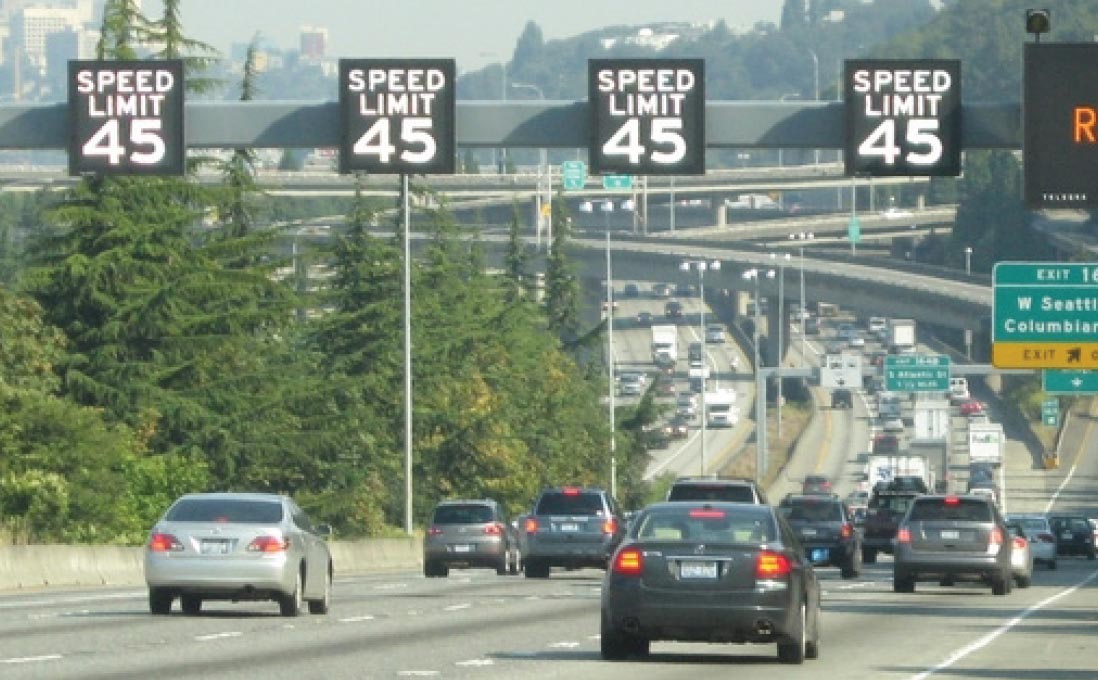U.S. Department of Transportation
Federal Highway Administration
1200 New Jersey Avenue, SE
Washington, DC 20590
202-366-4000
Selecting appropriate speed limits on roadways is important in maintaining a safe and efficient transportation network. Speed limits are established with an engineering study based on inputs like traffic volumes, operating speeds, roadway characteristics, and crash history. However, conditions on the roadway are susceptible to change in a short amount of time (e.g., congestion, crashes, weather). Drivers typically determine their operating speeds under normal weather conditions on a straight roadway section with good pavement quality and adequate sight distances. If ideal conditions do not exist and the roadway does not meet the driver’s expectations, there is a greater chance that a driver error could result in a crash. Providing variable speeds limits (VSLs) capable of adapting to changing circumstances could reduce crash frequency and severity.

Source: WSDOT
VSLs use prevailing information on the roadway, like traffic speed, volumes, weather, and road surface conditions, to determine appropriate speeds and display them to drivers. This strategy improves safety performance and traffic flow by reducing speed variance (i.e., improving speed harmonization). VSLs may also improve driver expectation by providing information in advance of slowdowns and potential lane closures, which could reduce the probability for secondary crashes. VSLs can mitigate adverse weather conditions or to slow faster-moving traffic as it approaches a queue or bottleneck.
Speed management strategies, including VSLs, are integral to the Safe Speeds element of the Safe System Approach. Because humans are unlikely to survive high-speed crashes, VSLs reduce speeds so that human injury tolerances are accommodated in three ways: improving visibility, providing additional time for drivers to stop, and reducing impact forces.
Agencies can implement VSLs for the following applications:
Congestion
Incidents
Work Zones
Inclement Weather
Sources
1. Avelar et al. Developing Crash Modification Factors for Variable Speed Limit. FHWA, (2020).
Filter countermeasures by focus area, crash type, problem identified, and area type.
